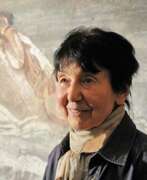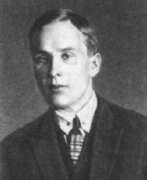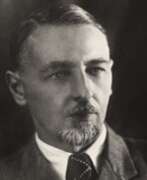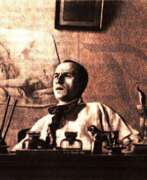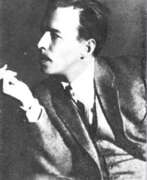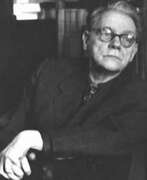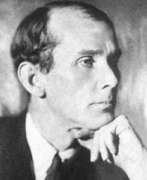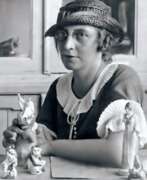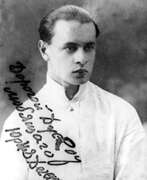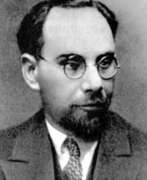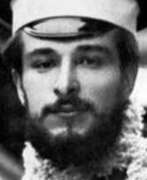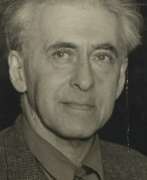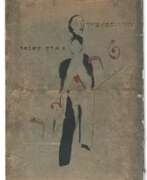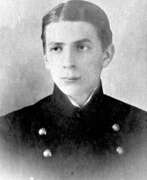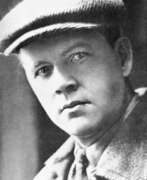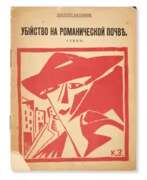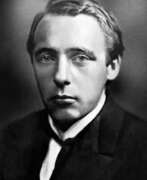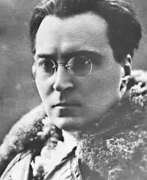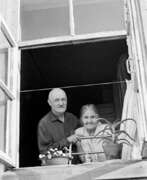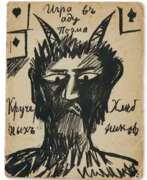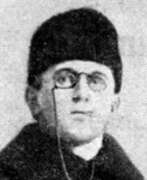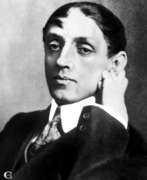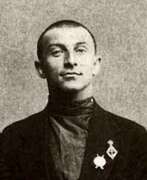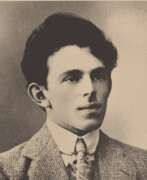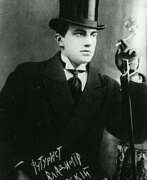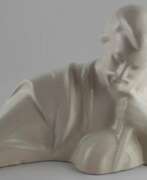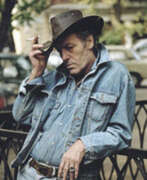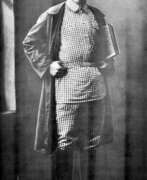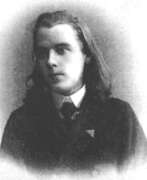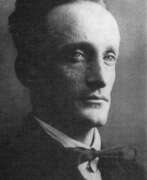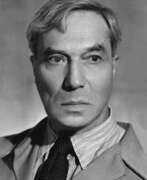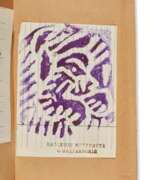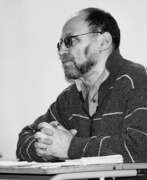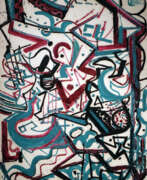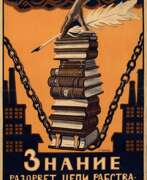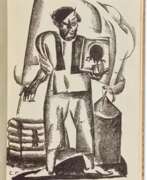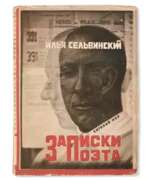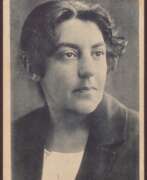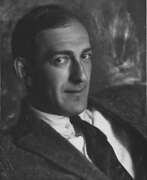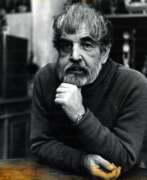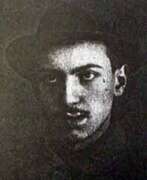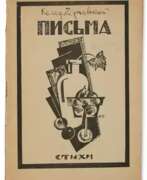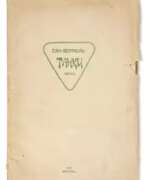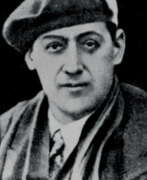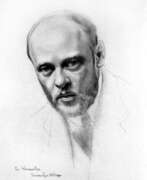Poets USSR (1922-1991)
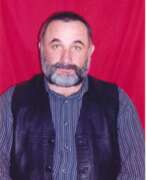

Issa Abasovich Barkhanoyev (Russian: Исса Абасович Барханоев) was a Soviet and Russian Ingush artist of the last quarter of the twentieth and early twenty-first centuries. He is known as a painter, draughtsman, landscape painter, genre painter and poet, a self-taught artist.
Issa Barkhanoyev created more than 500 paintings during his career, in which, according to critics, he skillfully conveyed his deep thoughts and feelings through images and symbols, and these works of art epitomize spirituality and life philosophy. The works of the folk artist are in museums of the Republic of Ingushetia and private collections.
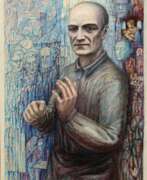

Pavel Nikolayevich Filonov (Russian: Павел Николаевич Филонов) was a distinguished Russian avant-garde painter, known for his unique approach to art and his profound influence on the culture of painting. Born in 1883, Filonov dedicated his life to developing a method he termed "Analytical Art," aiming to dissect and represent the inner dynamics of the visible world. His commitment to detail and a philosophy that art should be "made by all, for all" set him apart from his contemporaries.
Filonov's work is celebrated for its intricate texture and complex compositions, embodying a meticulous technique that captures the essence of his subjects. Unlike other artists of his time, Filonov refused to sell his artwork, believing it was a collective treasure that should benefit society. This idealism contributed to his relative obscurity during his lifetime, but posthumously, his oeuvre has been recognized for its visionary qualities. Notable works like "The Formula of the Petrograd Proletariat" exhibited at the Russian Museum in Saint Petersburg showcase his mastery and ideological commitment to art.
Filonov's legacy is a testament to his relentless pursuit of an artistic vision that was both revolutionary and deeply humanistic. His works, housed in prestigious museums and galleries, continue to inspire art collectors and experts, offering a window into the radical experiments of early 20th-century Russian art.
For those intrigued by Filonov's unique perspective and contributions to the art world, staying informed about upcoming exhibitions, sales, and auction events is essential. Signing up for updates ensures enthusiasts and collectors alike won't miss an opportunity to engage with the profound and captivating world of Pavel Nikolayevich Filonov.
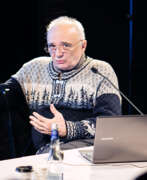

Andrei Viktorovich Sumnin (Russian: Андрей Викторович Сумнин), known under the pseudonym Andrei Monastyrski (Russian: Андрей Монастырский), was a Russian poet, writer, artist, and art theorist, as well as one of the founders of Moscow Conceptualism. In 1976, he became one of the founders of the group "Collective Actions" and the author-editor of most volumes of the documentation "Trips out of Town". Andrei Monastyrski also participated in exhibitions of Apt-Art and the Club of Avant-Garde (KLAVA) in Moscow, as well as numerous domestic and foreign exhibitions. He is also the author of theoretical articles on contemporary art in domestic and foreign publications.
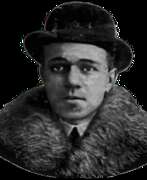

Pavel Dmitrievich Shirokov (1893–1963) (Russian: Павел Дмитриевич Широков) was a poet of Ego-Futurism in Russia in the 1910s. He was a close friend of Ivan Ignatyev, who published Shirokov's first book entitled "Rozy v Vine" (Roses in Wine).
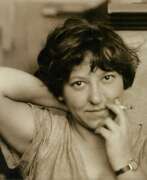

Varvara Fyodorovna Stepanova (Russian: Варва́ра Фёдоровна Степа́нова) was a Russian artist, a key figure in the avant-garde movement, particularly within the Constructivist branch that emerged in post-revolutionary Russia. Her work spans across various domains, including painting, graphic design, textile design, and theatrical set design. Stepanova's marriage and collaboration with fellow artist Aleksandr Rodchenko played a significant role in their creative exploration, where they together embarked on endeavors that significantly influenced the constructivist and avant-garde scenes.
Stepanova's contribution to the world of art and design was profound, especially in clothing and textile design, where she innovated with her approaches to "prodezodezhda" (production clothing) and "sportodezhda" (sports clothing), integrating geometric forms and functionality over aesthetic decoration. Her designs were not just artistic statements but were deeply embedded with practicality and efficiency, aiming to serve the new socialist society of the Soviet Union. Despite facing economic restrictions that limited the mass production of her designs, Stepanova's work in the clothing industry, particularly through her theatrical costumes, showcased her unique ability to blend art with functionality, emphasizing movements and creating garments that transformed the body into dynamic compositions.
In the realm of graphic design and propaganda, Stepanova's work alongside the early Soviet campaigns to promote literacy and her contribution to the magazine "LEF" illustrate her commitment to serving societal development through art. She utilized her skills in typography and book design to support educational and revolutionary propaganda, further highlighting her multifaceted talent and her dedication to the constructivist ideals.
Stepanova's textile designs, characterized by their bold graphic designs and innovative approach to fabric production, were another area where her artistic genius shone. Working at the First State Textile Factory and as a professor of textile design, she created over 150 fabric designs that featured geometric shapes and a limited color palette, showcasing her ability to generate dynamic, multi-dimensional designs despite technological and material limitations.
Her involvement in Constructivism was marked by a clear departure from the idea of art as a spiritual activity, towards a focus on serving the revolutionary development of society. Stepanova, along with Rodchenko and others, formed the first Working Group of Constructivists, advocating for art that was directly useful for society, leading her to design clothing that rejected class and gender distinctions in favor of functional, utilitarian aesthetics.
One of Stepanova's notable contributions was to the field of photomontage, particularly through her work "The Results of the First Five-Year Plan," which utilized this technique to promote Soviet achievements. This work exemplifies how she applied constructivist principles to serve the ideals of the Soviet Union, blending art with political propaganda in a manner that was visually striking and ideologically aligned with the goals of the newly established USSR.
For collectors and experts in art and antiques, Stepanova's work remains a fascinating exploration of how avant-garde principles can be applied across different mediums and for various societal needs. Her legacy in the constructivist movement and her contributions to the avant-garde are celebrated in collections and exhibitions around the world.
To stay updated on new product sales and auction events related to Varvara Fyodorovna Stepanova, sign up for updates. This subscription ensures you remain informed about opportunities to acquire pieces linked to this pivotal figure in Russian avant-garde art.
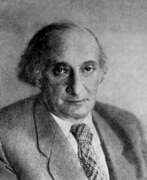

Natan Vengrov (Moses Pavlovich Vengrov) - Soviet children's poet, prose writer, literary critic, teacher, member of the Writers' Union since 1934.
Natan Vengrov paid great attention to the issues of publishing and improving children's and youth literature, its educational role.
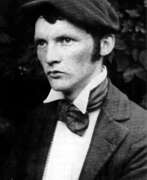

Heinrich Vogeler was a German artist and philosopher, a representative of the German Art Nouveau. A versatile and talented artist, he painted, watercolored, composed poems, designed, designed and decorated. Over time, his style of art changed over a wide range.
During World War I, from 1914 to 1917, Vogeler was on the Eastern Front as a volunteer and made sketches, which resulted in his pacifist sentiments.
In the mid-1920s he visited the Soviet Union several times and his impressions resulted in paintings in his own "complex style: "Karelia and Murmansk" (1926), "Building a New Life in the Soviet Republics of Central Asia" (1927), and "Baku" (1927). In 1931 Vogeler received an invitation to work in the USSR. The coming to power of the Nazis in Germany made it impossible for him to return home, and after Hitler's invasion Vogeler among many was deported to the Kazakh SSR, where he died.


Maximilian Alexandrovich Voloshin (Russian: Максимилиа́н Алекса́ндрович Волошин) was a multifaceted Russian figure, known for his profound contributions as a poet, artist, literary critic, art historian, mystic, philosopher, and journalist. His work, deeply intertwined with the landscapes of Crimea and the ancient, complex terrains of Koktebel, reflects a geological, philosophical, and pantheistic precision, rather than geographical accuracy. Voloshin's watercolors of Crimean landscapes, notable for their lack of geographical precision but profound depth in geological and philosophical terms, are celebrated for capturing the essence of Crimea's natural beauty. His poetry and art, deeply influenced by symbolist movements, did not align with any single avant-garde art group, showcasing his unique stance as both an artist and a poet. Voloshin's life was a testament to his eccentricity and depth, filled with intellectual pursuits, extensive travels, and a commitment to community and humanism, particularly evident in his efforts during the tumultuous times of the Russian Civil War, where he sought to mediate between opposing factions.
Voloshin's contributions to Russian culture are significant, with his works offering insights into Russian history and philosophy. Despite periods of obscurity, particularly under Soviet rule, his legacy as a key figure of the Russian Silver Age endures, with his home in Koktebel now serving as a museum and a place of pilgrimage for many. His poetry, characterized by its philosophical depth and historical insight, has found resonance in modern times, not only within literary circles but also in music, with bands like Little Tragedies setting his poems to music.
For those interested in exploring the profound and visionary works of Maximilian Voloshin, his poetry and art continue to offer a window into the soul of Russian history and the natural beauty of Crimea. Collectors and experts in art and antiques might find the exploration of Voloshin's work both enriching and enlightening.
For updates related to Maximilian Alexandrovich Voloshin, including new product sales and auction events featuring his work, sign up for our newsletter. Stay connected with the legacy of a visionary poet and artist whose work transcends time and geography.
